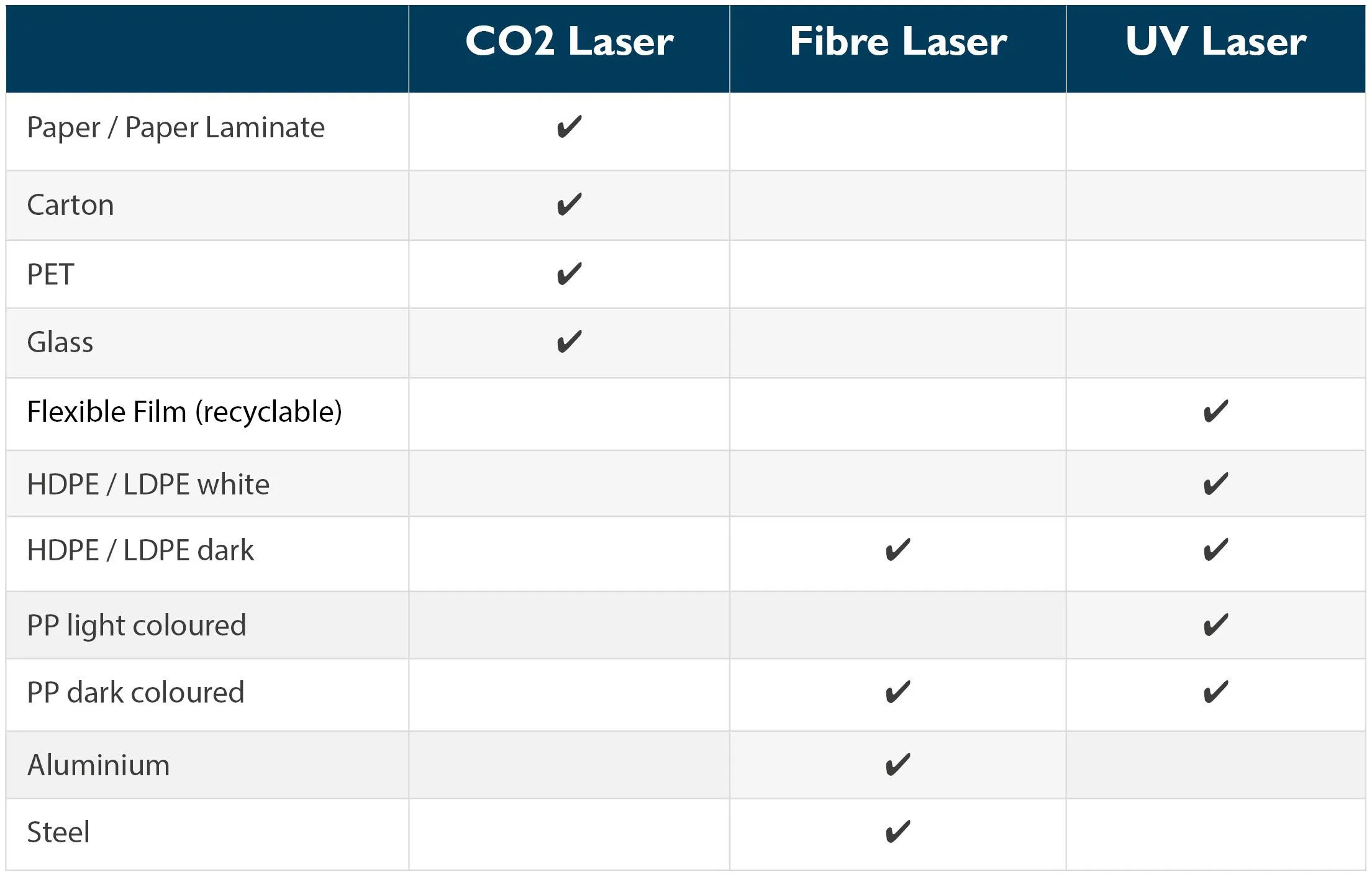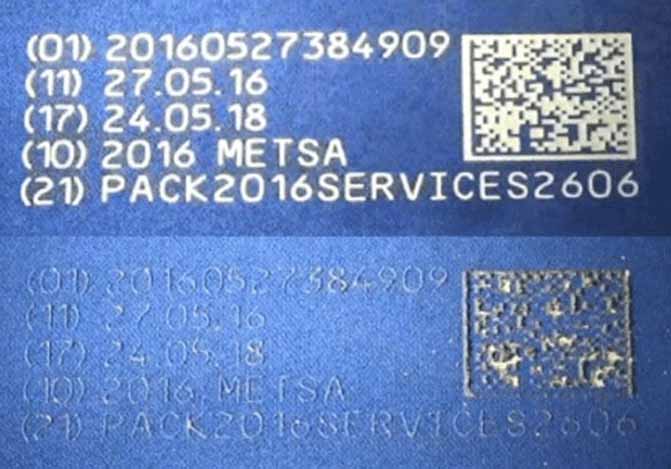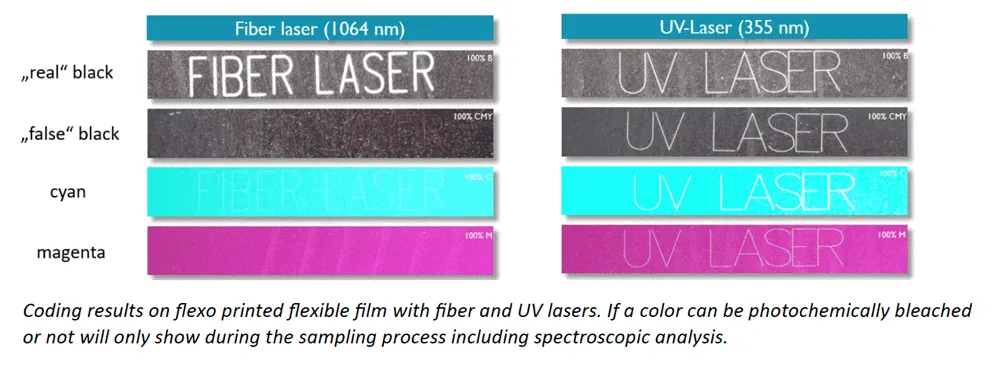The scientific probing at Domino’s Laser Academy in Hamburg is an essential part of the laser selection process for any laser coding application. In this blog, we delve into the intricacies of laser sampling, from the mechanics of light absorption to the meticulous analysis of materials – and explain why this is so important when deciding which type of laser to use.
Of course you can roughly define which laser technology is best suited to code a certain substrate. But that is only the beginning of the story:

The science of lasers and materials
Central to laser coding is the interaction between light energy and packaging materials. This interaction hinges on a material’s capacity to absorb the energy emitted by the laser – the better a material absorbs the laser light, the better the code quality. Choosing the right laser does not depend on technical specifications alone, but requires a careful analysis of the material. Let’s have a look at what this means in practice using the example of CO2 lasers. CO2 lasers can use three different wavelengths, however, a material may be responsive to one wavelength while entirely unresponsive to the other two. Or you might have identical looking materials that react completely differently, because the composition of the materials differs. This principle extends to UV and fibre lasers as well.
Using state-of-the-art analytical equipment our application lab analyses material samples before and after the laser coding to make sure that the proper laser solution for the specific application can be offered.
The complexity of materials
The surface appearance of a material will not always reveal the intricate complexities beneath. Two visually identical carton samples, for example, may respond very differently to laser coding, due to variations in the components in the mineral coating, which is located below the printing colour and cannot be seen.
The image below shows visually similar carton samples that have been coded with the same CO2 Laser and set of laser parameters. The variation in the mineral coating leads to completely different coding results.
Pre-coding analysis is crucial to an effective understanding of such subtleties in material composition.

Cracking the code for flexible films
The challenge becomes even greater when it comes to flexible films, which are widely used in modern packaging. Flexible films can be anything from single-layer films to multi-layer laminates. It is very difficult to predict the behaviour of such materials, particularly when using solid-state lasers such as fibre and UV lasers. Solid-state lasers react directly with pigments and dyes, achieving a code via a photochemical bleaching process, however, the exact components of dyes can influence a laser’s suitability. The sampling process is the only mechanism by which the match between material and coding can be determined.

Real-time online sampling
Domino Laser offers a real-time collaborative online sampling experience, to allow our customers to participate in the substrate analysis and laser marking of their sample products. The experience includes live recordings of absorption spectra and 3D depth measurements of the laser code, and real-time evaluation of machine-readable codes to ensure alignment with recognised standards. Direct communication with our sample team is made possible via Bluetooth headsets, this exchange ensures customer’s expertise and wishes are incorporated and refined, to help define the best laser solution for the individual application. The inclusion of live samples is seamlessly integrated into our process and is offered at no additional cost.
More than a service, this is a collaborative experience, that many of our customers have highlighted as central to their decision to partner with Domino:
We approached several different coding and marking suppliers with the brief, and Domino stood out as the only supplier dedicated to working truly collaboratively with us to find the most appropriate design and solution for creating the markers.
Kevin Higgins, Engineer at Procter & Gamble (P&G)
Read the whole Case Study with P&G to dive deeper into this sampling process.
If you’re interested in learning more or are currently investigating using a laser coding solution on your production line, please contact our laser experts.